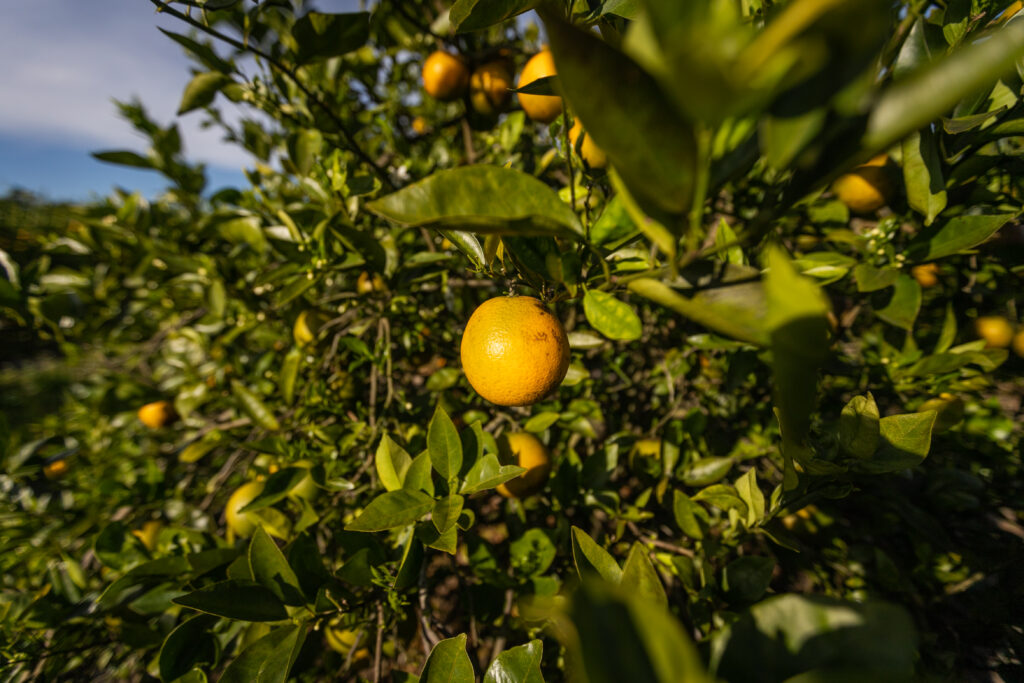Citrus Greening Bacteria’s Complex Relationship With Tree Defense System Creates Challenges
by UF/IFAS
At the heart of the disease that threatens the Florida citrus industry is a complex exchange between the citrus tree and an insidious bacterium.
Huanglongbing, or HLB, also known as citrus greening, has wreaked havoc on Florida’s citrus groves for more than 15 years. University of Florida Institute of Food and Agricultural Sciences (UF/IFAS) researchers continue to study the bacterium that causes the deadly disease, learning more about how it works within the citrus tree – all in an effort to find viable solutions for growers.
In a new paper, Amit Levy, assistant professor of plant pathology, and first author Chiara Bernardini, a post-doctoral researcher in Levy’s lab, have discovered some new ways that the bacteria interact with a citrus tree’s natural defenses. Their findings shed light on the complexity of the disease path within the tree and what it means for scientists looking to mitigate its deadly impact.
Levy and Bernardini discovered how the bacteria and citrus tree engage in a “back-and-forth” reactionary relationship. He and others showed that once infected with the CLas (Candidatus Liberibacter asiaticus) bacterium, the tree’s defense system starts to generate callose in the phloem, a material that essentially “plugs” the phloem and generates something called “reactive oxygen species” or ROS.
In plants, ROS is involved in a plant’s defense systems and impacts a plant’s tolerance to various types of stress. Presence of a pathogen like CLas can increase ROS production to a negative effect and eventually cause cell death.
Levy’s research found that the CLas bacteria responded to the generation of callose and reactive oxygen species by actually reducing them, allowing bacteria to once again replicate and transport throughout the tree.
This back-and-forth repetitive relationship of callose plugging and reactive oxygen species accumulatio — and then their elimination by Clas — is a complicated one and replicates an immune response competition between hosts and pathogens found in many other diseases.
Citrus varieties that maintain a fine balance between callose and reactive oxygen species generation and then elimination without either side gaining “control” may be more inclined to continue to produce fruit over many years.
“This research demonstrates the complicated, intertwined relationship between the HLB bacteria and the tree’s immune defense system.” Levy says. “The fact that CLas developed mechanisms to suppress the immunity tells us that the plant immunity is critical to stop the bacteria. The HLB disease is about both the pathogen and the immune response, and their interaction. It is a fine balance.”
Learning more about how and when to stop this back-and-forth relationship and how it varies among different citrus varieties may bring us closer to finding sustainable solutions to fighting this disease.
Levy’s research appears in the July issue of Plant Physiology.

